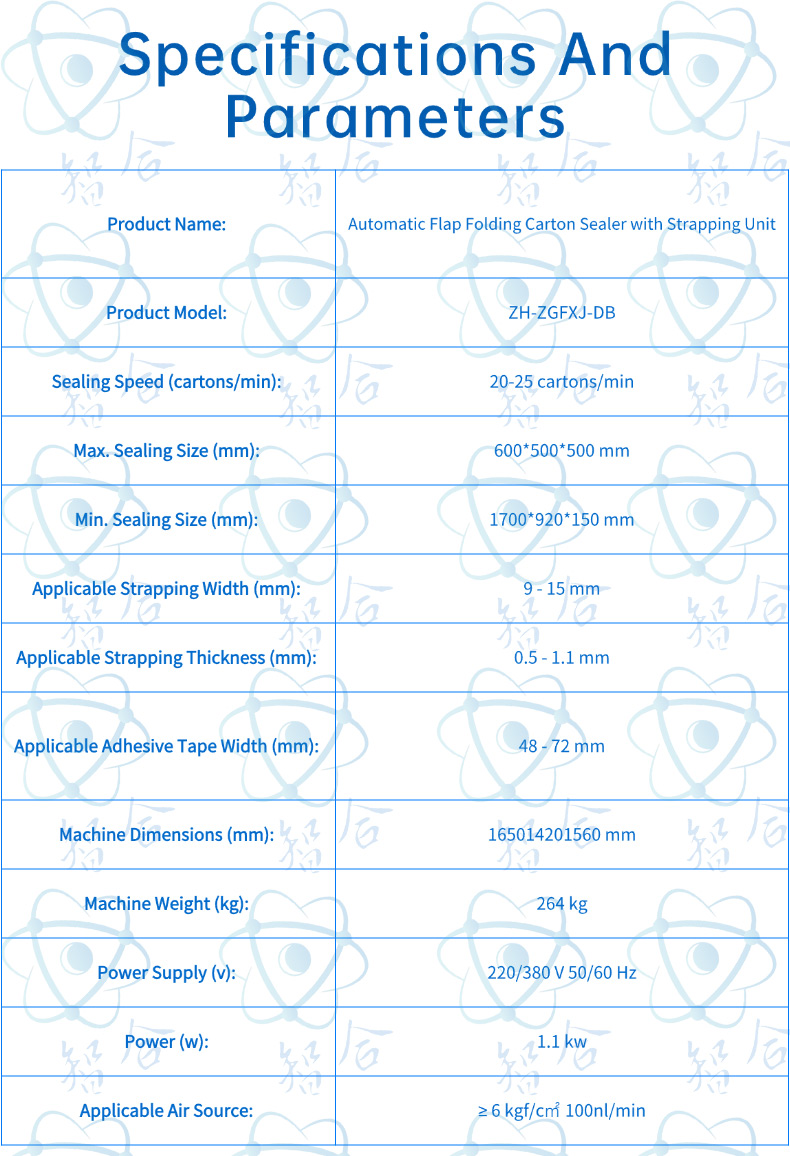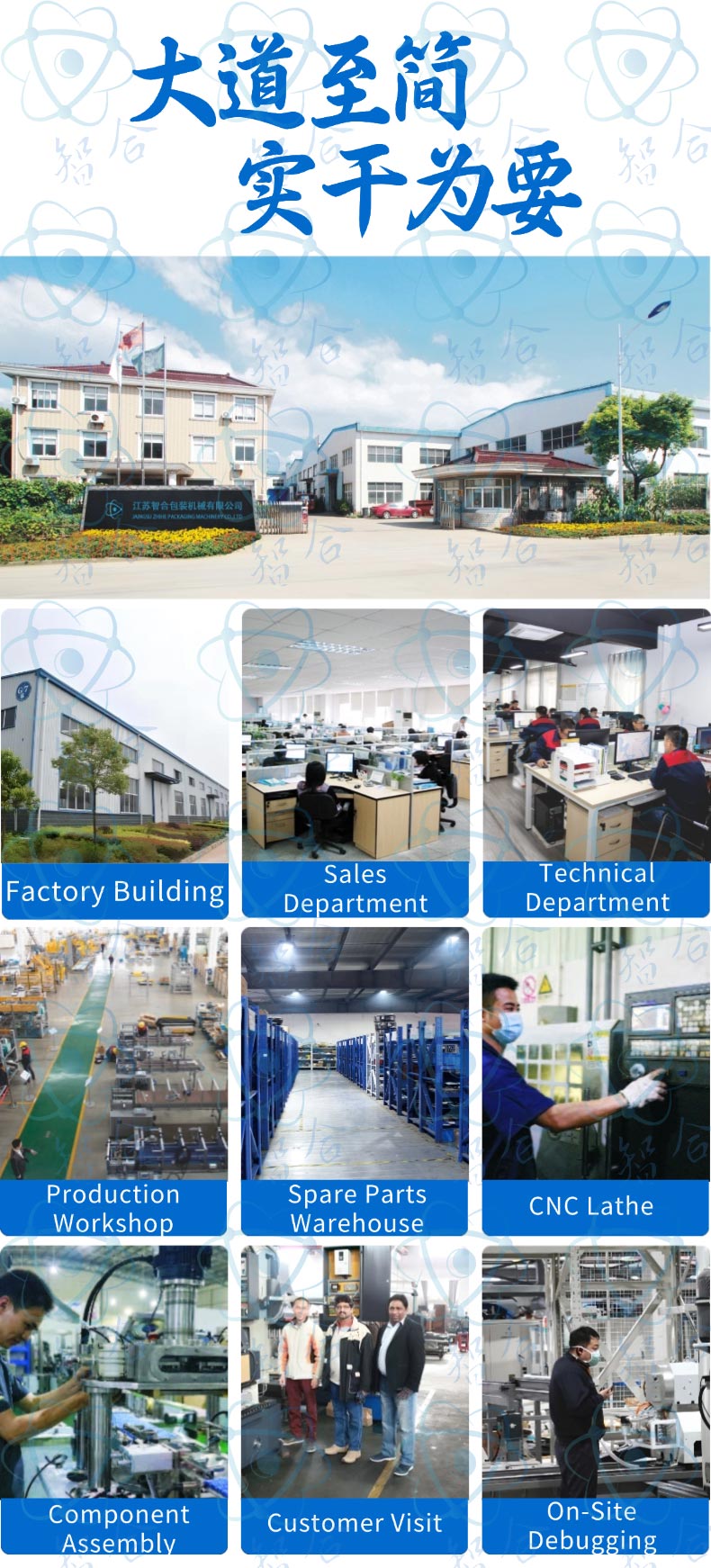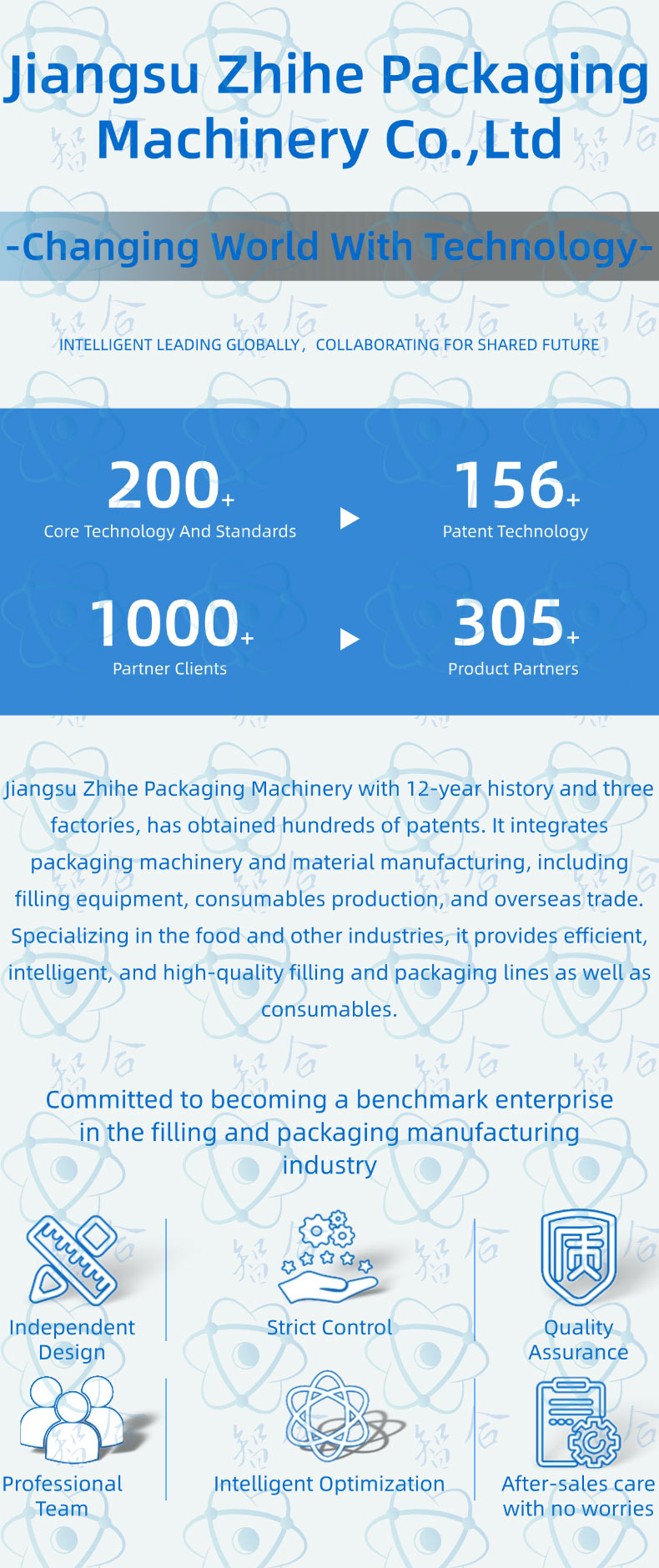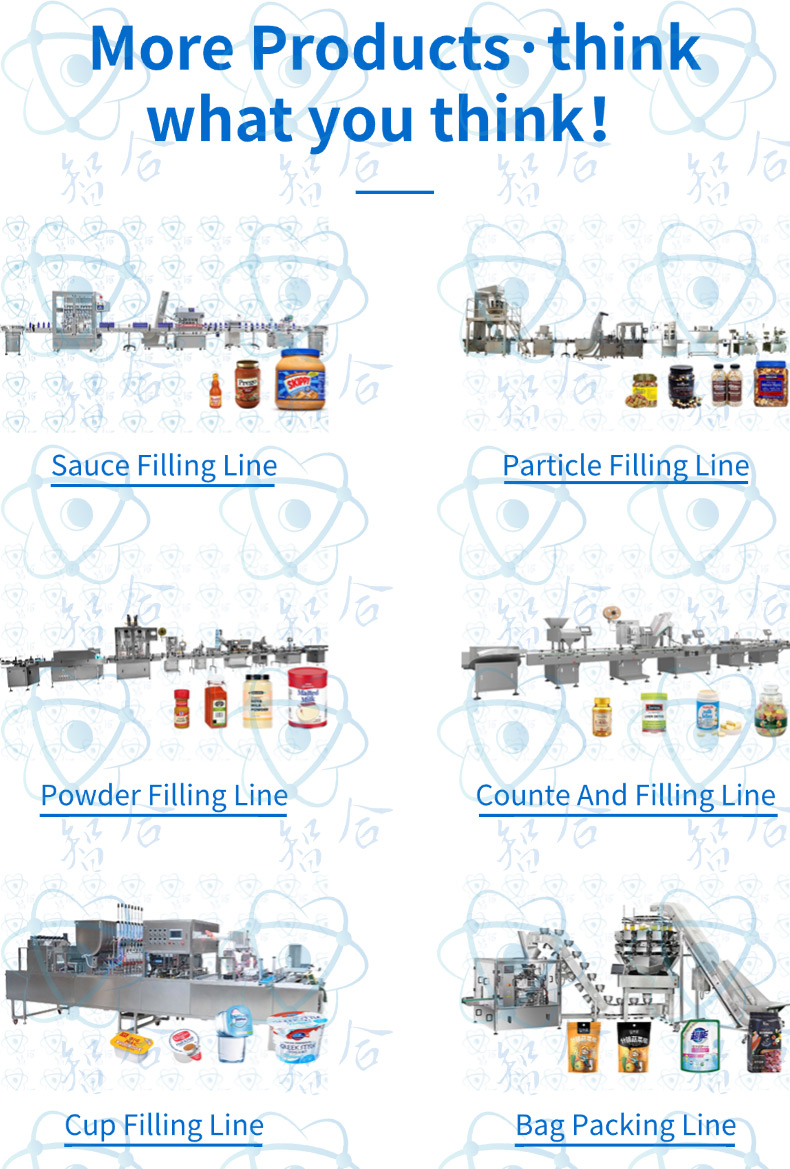

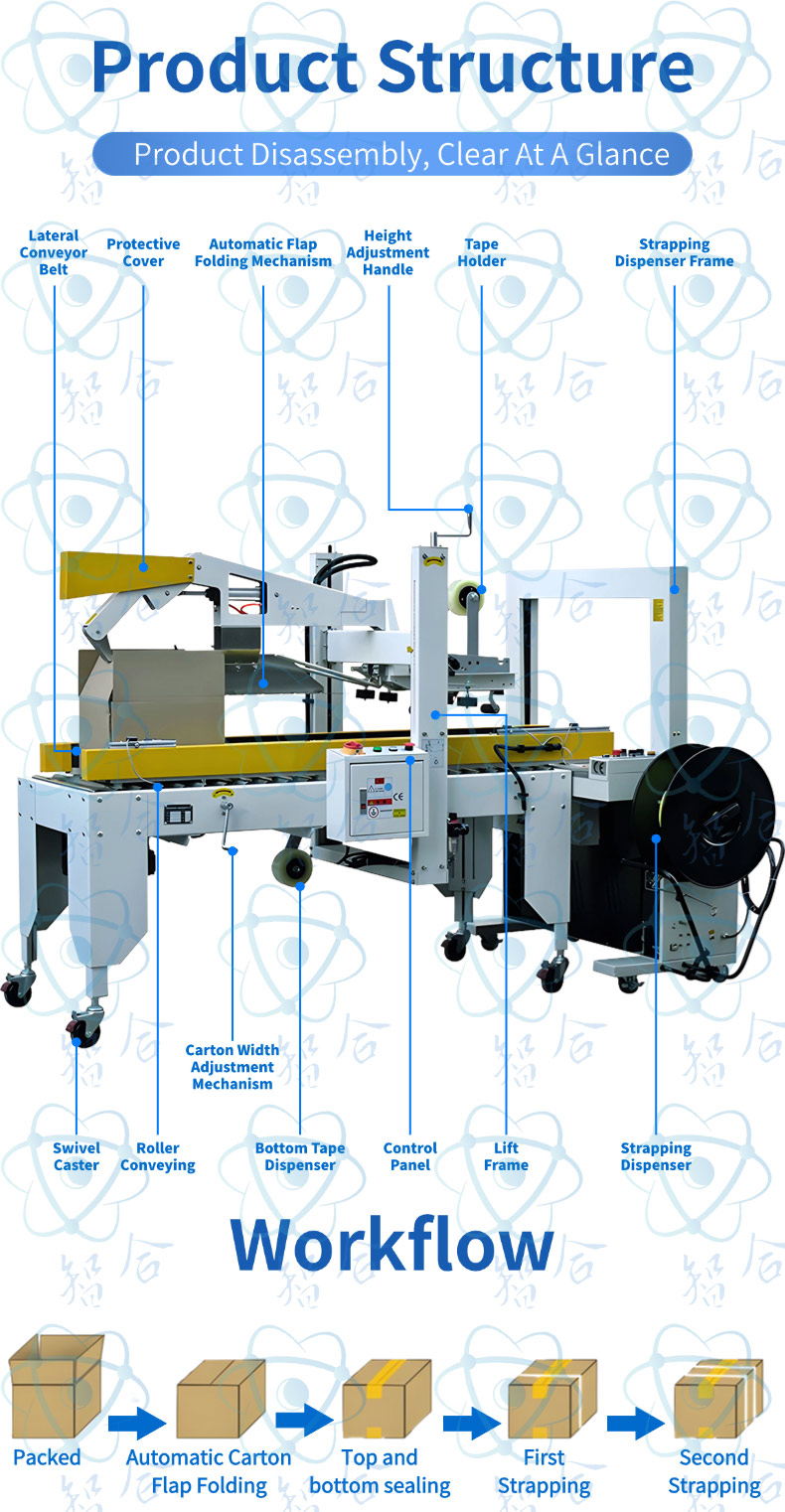
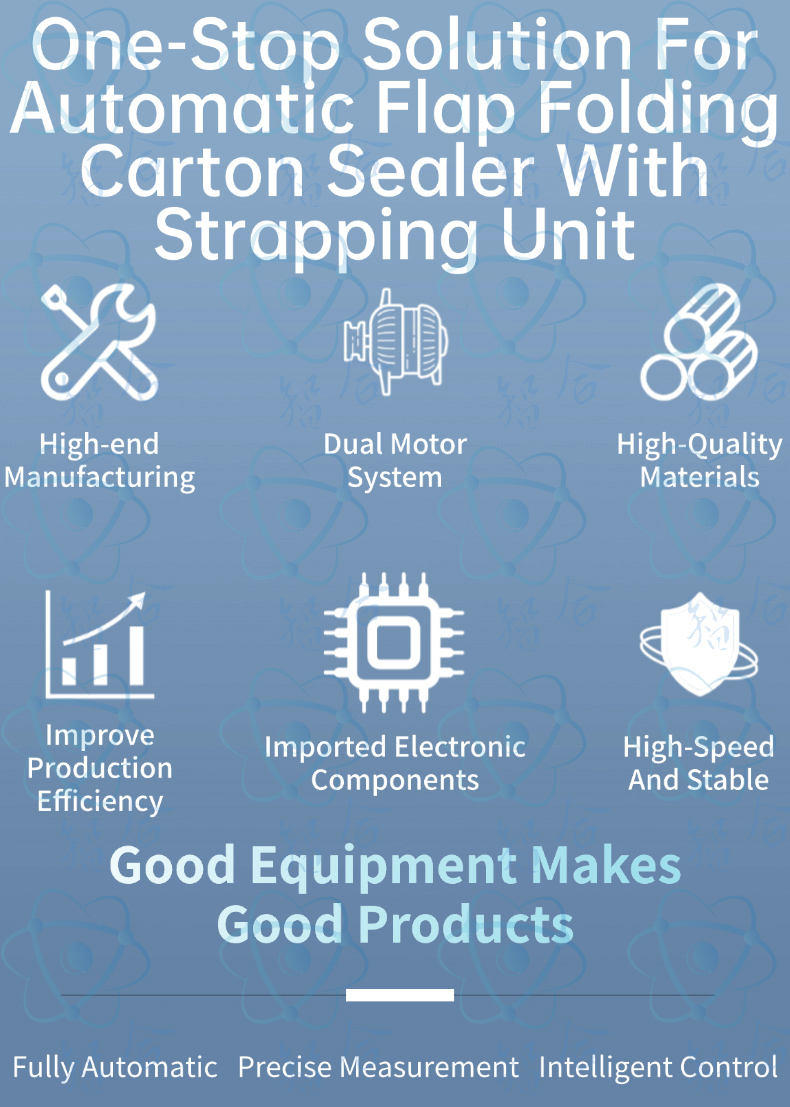
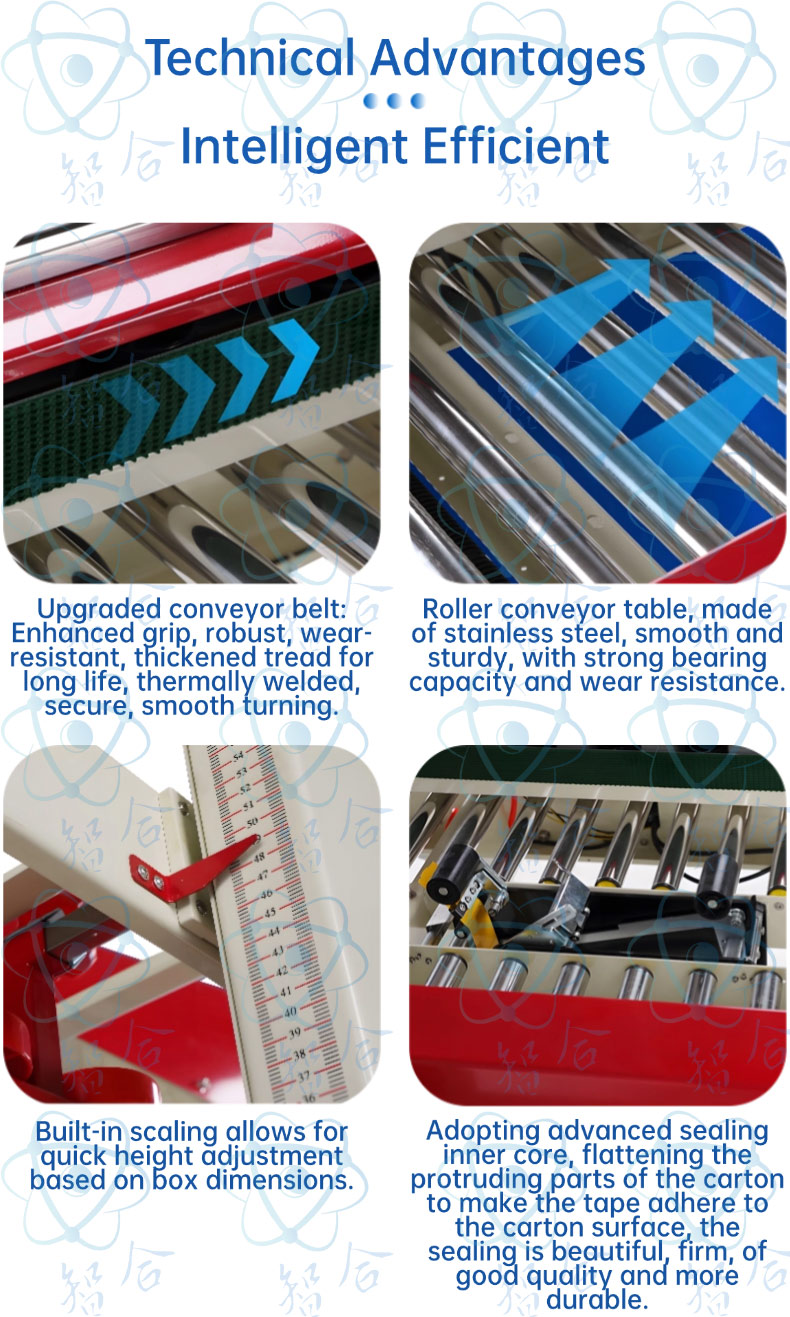
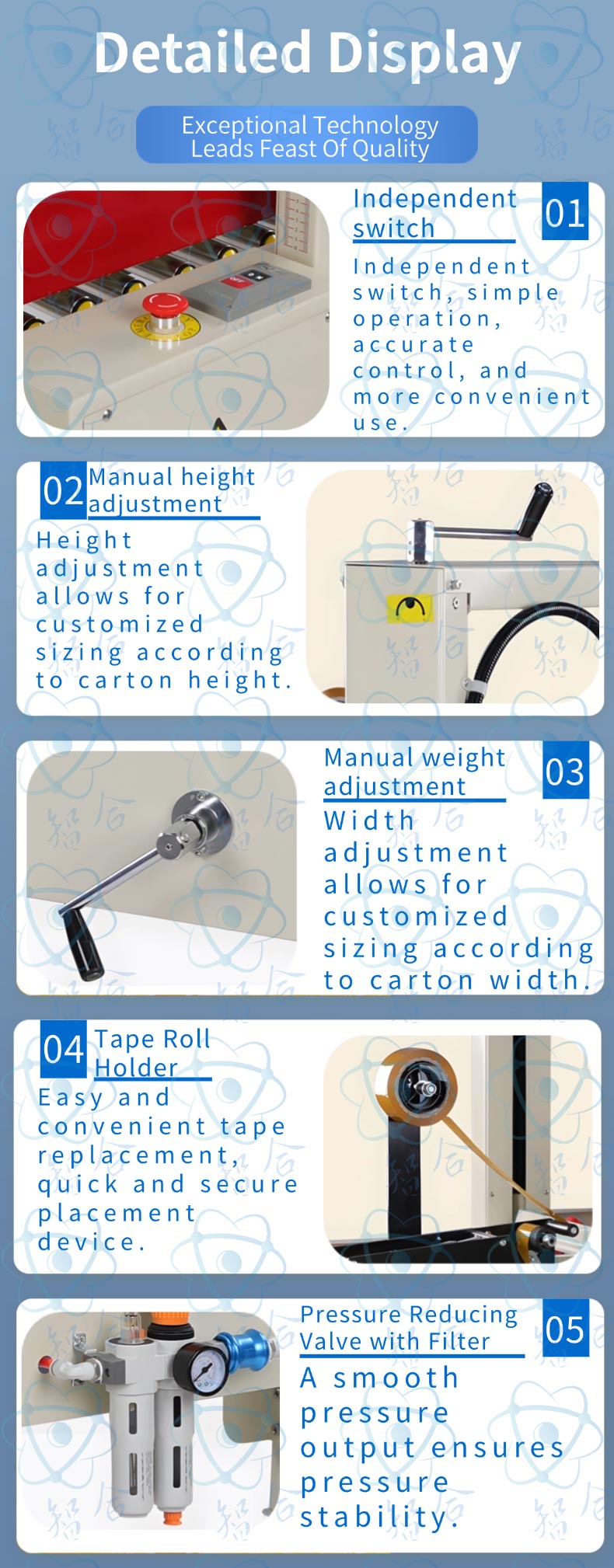 Automatic Flap Folding Carton Sealer with Strapping Unit
Automatic Flap Folding Carton Sealer with Strapping Unit
I. Equipment Overview and Functions
The Fully Automatic Flap Folding Carton Sealer with Strapping Unit, as the name suggests, is an automated packaging equipment that integrates automatic carton flap folding and sealing with strapping functions. It is primarily used in the final packaging stages of production lines, efficiently and quickly completing the automatic folding of carton flaps, tape sealing, and subsequent strapping processes.
Its core functions can be summarized as:
1. Automatic Carton Flap Folding: The machine automatically detects the carton in position and uses mechanical devices to fold the carton’s top flaps (typically front, rear, left, and right flaps) in a preset sequence.
2. Automatic Tape Sealing: After the carton flaps are folded, the machine utilizes a sealing head to automatically tape seal the top and bottom seams of the carton, ensuring a secure and aesthetically pleasing closure.
3. Automatic Carton Strapping: The sealed carton automatically enters the strapping station. The machine uses strapping bands (PP, PET, etc.) to strap the carton, usually in a “cross” or “parallel” pattern, to enhance the carton’s strength and packaging stability, facilitating handling and storage.
Compared to a standalone Fully Automatic Flap Folding Carton Sealer, the main advantages of this equipment are:
Integrated Operation: Combining sealing and strapping processes into one machine reduces equipment footprint, simplifies production flow, and lowers labor costs.
Efficiency Improvement: Assembly line operation, with continuous sealing and strapping, significantly improves packaging efficiency, suitable for high-volume production needs.
Enhanced Packaging Quality: Automated operation ensures standardized and consistent sealing and strapping, improving packaging quality and aesthetics.
Reduced Manual Intervention: High degree of automation greatly reduces manual operation, lowers labor intensity, and minimizes the risk of human error.
II. Equipment Structure Composition
To better understand the equipment, we can divide its structure into two core modules: the Flap Folding Sealing Module and the Carton Strapping Module. In practice, the strapping module is added after a standard flap folding carton sealer, with a conveying mechanism connecting and coordinating the two.
1. Flap Folding Sealing Module (Core Section)
This section is essentially the same as a standard Fully Automatic Flap Folding Carton Sealer, mainly responsible for completing the automatic flap folding and tape sealing of cartons. Its main components include:
Infeed Conveying Mechanism: Typically uses powered rollers or belt conveyors to smoothly transport cartons to be sealed to the flap folding and sealing station. [Image of Infeed Conveying Mechanism]
Carton Positioning Mechanism: Utilizes photoelectric sensors or mechanical baffles to detect the carton’s arrival and precisely position it, ensuring the accuracy of subsequent folding and sealing actions.
Side Flap Folding Mechanism: Usually employs pneumatic cylinders or cam mechanisms to drive folding plates, initially folding the left and right side flaps of the carton inwards.
Front and Rear Flap Folding Mechanism: Also employs pneumatic cylinders or cam mechanisms to drive folding plates, folding the front and rear top flaps of the carton (usually the top flaps) in a preset sequence, such as folding the rear flap first, then the front flap, and inserting it between the side flaps. Some high-end models may use more complex linkage mechanisms to ensure smooth and precise flap folding. [Image of Flap Folding Mechanism]
Sealing Head Assembly (Tape Head): This is the core component of the sealing module, typically equipped with two tape heads, responsible for sealing the top and bottom seams of the carton. The tape head internally includes cutters, pressure rollers, guide wheels, and other components to automatically complete tape pulling, adhering, cutting, and pressing actions. [Image of Sealing Head Assembly]
Sealing Conveying Mechanism: During the sealing process, a conveying mechanism is needed to drive the carton smoothly through the sealing head, ensuring uniform tape adhesion. This part of the conveying mechanism may be integrated with the infeed conveying mechanism or may be an independent short conveying section.
Frame and Adjustment Mechanism: The frame supporting the entire flap folding sealing module, usually welded from profiles, provides a stable structure. Additionally, to accommodate different carton sizes, the equipment is typically equipped with carton size adjustment mechanisms, such as handwheels, lead screws, etc., for easy adjustment of the machine’s width and height.
Control System and Sensors: Includes PLC programmable controller, Human-Machine Interface (HMI/touch screen), photoelectric sensors, proximity switches, etc., used to control the equipment’s operating logic, parameter settings, status monitoring, and fault alarms. [Image of Control System]
2. Carton Strapping Module
This is the core module added on top of the flap folding sealing module, responsible for strapping the sealed cartons. Its main components include:
Strapping Machine Main Body: This is the core of the strapping module, containing mechanisms for strap feeding, tensioning, heat sealing, and cutting. Depending on the strapping method, the strapping machine body may adopt different structures, such as high table type, low table type, side strapping type, etc. Fully automatic carton sealer and strappers usually employ a high table type strapping machine, where cartons pass from below and the strapping head operates from above. [Image of Strapping Machine Main Body]
Strap Reel Holder and Feeding Mechanism: Used to hold the strapping reel and feed it into the strapping machine main body. The feeding mechanism needs to ensure smooth and consistent strap feeding and be able to feed precisely according to the strapping machine’s instructions.
Strapping Head Assembly: The strapping head is the core component of the strapping module, responsible for completing the actions of strap wrapping, tensioning, sealing (heat sealing or friction welding), and cutting. Its internal structure is complex, containing multiple pneumatic cylinders, motors, heating elements, cutters, sensors, and other precision components. [Image of Strapping Head Assembly (Strapping Machine)]
Strapping Track or Frame: A track or frame that guides the strapping band around the carton for wrapping. It is usually designed based on the strapping method and carton size. For example, a “cross” strapping requires both longitudinal and transverse strapping tracks.
Strapping Conveying Mechanism: Transports the sealed carton to the strapping station and supports and positions the carton during strapping. This conveying mechanism needs to seamlessly connect with the conveying mechanism of the flap folding sealing module, typically using powered rollers or belt conveyors.
Strapping Force Adjustment Mechanism: Allows adjustment of the strapping band’s tension force to accommodate cartons of different materials and strengths, preventing damage from over-strapping or loose packaging from under-strapping.
Strapping Mode Selection and Control: The control system can set different strapping modes, such as “cross”, “parallel”, single-strap, double-strap, etc., and adjust the number and position of straps. Parameter settings and mode selections are usually done through the PLC and HMI.
3. Connection and Coordination Between Modules
Conveying Line Connection: The flap folding sealing module and the strapping module are physically connected through a conveying line, ensuring a smooth transition of cartons from the sealing station to the strapping station for continuous operation.
Control System Linkage: The control systems of the two modules need to be linked to ensure the overall coordinated operation of the equipment. For instance, when the sealing module completes sealing, it needs to send a signal to the strapping module to initiate the strapping program. Simultaneously, the strapping module also needs to feedback the strapping completion signal to the overall control system for subsequent counting, alarming, and other operations.
Safety Protection: At the module connection points, necessary safety protection devices should be set up, such as light curtains, safety fences, etc., to prevent operators from accidentally entering dangerous areas and to ensure production safety.
III. Working Process
The working process of the Fully Automatic Flap Folding Carton Sealer and Strapping Machine is a continuous and efficient automation process. The detailed steps are as follows:
1. Manual or Machine Placement of Cartons on the Infeed Conveyor: Operators or machines place cartons filled with products (typically cartons that have already undergone the packing process) onto the infeed conveyor line. Cartons are usually pre-formed but with the top flaps open.
2. Carton Enters Flap Folding and Sealing Station: The infeed conveyor moves the carton forward. Detection devices, such as photoelectric sensors or mechanical baffles, detect the carton entering the flap folding and sealing station.
3. Carton Positioning: Once the carton is in position, the positioning mechanism secures the carton to prevent displacement during the flap folding and sealing processes, ensuring operational accuracy.
4. Side Flap Folding: The side flap folding mechanism is activated, folding the left and right side flaps of the carton inwards.
5. Front and Rear Flap Folding: The front and rear flap folding mechanism folds the front and rear top flaps of the carton in a preset sequence (e.g., rear flap first, then front flap), and inserts the front flap between the already folded side flaps.
6. Automatic Tape Sealing: The sealing head assembly is activated, automatically pulling out tape to simultaneously or sequentially seal the top and bottom seams of the carton. The tape head completes the actions of tape adhering, pressing, and cutting.
7. Sealing Completed, Carton Leaves Flap Folding and Sealing Station: The sealing conveying mechanism moves the sealed carton forward, leaving the flap folding and sealing station.
8. Carton Enters Strapping Station: The conveyor line smoothly transports the sealed carton to the strapping station and positions it.
9. Strapping Machine Activated, Carton Strapping Performed: The strapping machine main body is activated, strapping the carton according to the preset strapping mode (e.g., “cross” strapping). The strapping head completes the actions of strap feeding, tensioning, sealing, and cutting. If it’s a multi-strap process, the strapping process is repeated.
10. Strapping Completed, Carton Leaves Strapping Station: The strapping conveying mechanism moves the strapped carton forward, leaving the strapping station.
11. Finished Carton Output: The strapped carton is transported to the end of the equipment, usually to be manually removed or connected to subsequent palletizing, packaging lines, or other equipment.
12. Equipment Cyclical Operation: After completing the sealing and strapping of one carton, the equipment automatically enters the next cycle, waiting for the arrival of the next carton.
IV. Equipment Advantages and Features
High Automation: Achieves fully automatic operation of carton flap folding, sealing, and strapping, significantly saving labor costs and improving production efficiency.
Stable and Reliable: Utilizes high-quality electrical components, pneumatic components, and mechanical parts, ensuring stable and reliable equipment operation, low failure rate, and convenient maintenance.
Simple Operation: User-friendly HMI operation, simple and intuitive parameter settings, easy for operators to master.
Wide Applicability: Adjustable based on carton size range, suitable for sealing and strapping of various carton specifications.
Adjustable Strapping Force: Strapping force can be adjusted according to carton strength and packaging requirements to ensure packaging quality.
Diverse Strapping Modes: Multiple strapping modes can be selected to meet different packaging needs.
Material Saving: Tape and strapping band usage is controllable, effectively reducing packaging material costs.
Comprehensive Safety Protection: Equipped with safety protection devices to ensure operator safety.
Strong Expandability: Can be seamlessly integrated with upstream and downstream automation equipment (such as case packers, palletizers, etc.) to form a more complete automated packaging production line.
VI. Application Industries
The Fully Automatic Flap Folding Carton Sealer and Strapping Machine is widely used in the following industries:
Food and Beverage Industry: For example, carton packaging of beverages, beer, mineral water, canned food, snacks, and other products.
Pharmaceutical and Healthcare Industry: For example, carton packaging of pharmaceuticals, health products, medical devices, and other products.
Daily Chemical and Detergent Industry: For example, carton packaging of laundry detergent, shampoo, cosmetics, and other products.
Home Appliance and Electronics Industry: For example, carton packaging of televisions, refrigerators, washing machines, computers, electronic components, and other products.
Printing and Packaging Industry: For example, strapping packaging of cartons, cardboard boxes, books, periodicals, and other products.
E-commerce and Logistics Industry: Used for carton sealing and strapping of e-commerce packages to improve logistics efficiency.
Other Manufacturing Industries: For example, carton packaging in industries such as mechanical parts, hardware tools, building materials, furniture, etc.
VII. Summary
The Fully Automatic Flap Folding Carton Sealer and Strapping Machine is an efficient, stable, and reliable automated packaging equipment. Based on the Fully Automatic Flap Folding Carton Sealer, it innovatively integrates carton strapping functions, realizing the integrated operation of carton packaging. It significantly improves production efficiency, reduces labor costs, and enhances packaging quality. It is an indispensable and important component in modern automated production lines. I believe that through the above detailed technical specifications, you have gained a deeper understanding of this equipment.
If you have any other questions or need further information, please feel free to ask!